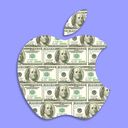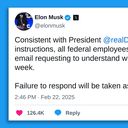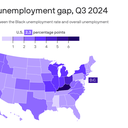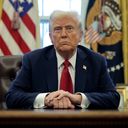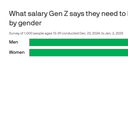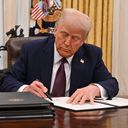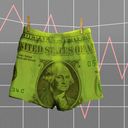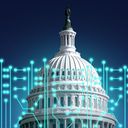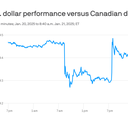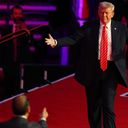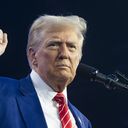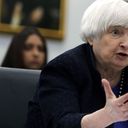Trump manufacturing win: Apple to spend $500 billion in U.S., hire 20,000
Apple on Monday morning announced plans to invest more than $500 billion in the U.S. and hire 20,000 people over the next four years, with expansion and construction planned from coast to coast.
- The new jobs will focus on research and development, silicon engineering, software development, and AI and machine learning.
- Apple plans to greatly expand chip and server manufacturing in the U.S., plus skills development for students and workers across the country.
Why it matters: Apple's announcement — which the company calls its "largest-ever spend commitment" — is precisely the kind of win President Trump has been looking for with his push to move manufacturing back to the U.S.
- Apple's new investment — much of it in red states — lets Trump say to other companies: Apple can do it. Why can't (or won't) you?
Apple CEO Tim Cook said in the announcement: "We are bullish on the future of American innovation, and we're proud to build on our longstanding U.S. investments with this $500 billion commitment to our country's future."
- "From doubling our Advanced Manufacturing Fund [from $5 billion to $10 billion], to building advanced technology in Texas, we're thrilled to expand our support for American manufacturing," Cook added. "And we'll keep working with people and companies across this country to help write an extraordinary new chapter in the history of American innovation."
The backstory: Trump met with Cook on Thursday in the Oval Office. Then Trump got so excited that he revealed the plans prematurely, saying on-camera while meeting with governors that Cook is "investing hundreds of billions of dollars. I hope he's announced it — I hope I didn't announce it, but what the hell? All I do is tell the truth — that's what he told me. Now he has to do it, right?"
- "He is investing hundreds of billions of dollars and others, too," Trump continued. "We will have a lot of chipmakers coming in, a lot of automakers coming in. They stopped two plants in Mexico that were ... starting construction. They just stopped them — they're going to build them here instead, because they don't want to pay the tariffs. Tariffs are amazing."
The big picture: Apple says it now supports nearly 3 million jobs across the U.S. through direct employment, work with suppliers and manufacturers, and developer jobs in the iOS app economy.
- Apple already works with thousands of suppliers across all 50 states, including 24 factories in 12 states.
- Apple's U.S. Advanced Manufacturing Fund has supported projects in 13 states, helping build local businesses and train workers.
Reality check: Apple made a similar announcement four years ago. In 2021, Apple committed $430 billion in U.S. investments and 20,000 new jobs across the country over five years — including a new campus in Research Triangle Park, North Carolina, where development was paused last year.
- Apple says it has worked with North Carolina Gov. Josh Stein (D) and the North Carolina Department of Commerce to extend the project's timeline. Apple says it continues to grow its teams in the Tar Heel State — both at corporate offices in Raleigh and at a data center in Catawba, where the company has exceeded planned investments.
Zoom in: Here's a rundown of Apple's new expansion plans:
- Texas: New advanced AI server manufacturing factory near Houston. The 250,000-square-foot server manufacturing facility, slated to open in 2026, "will create thousands of jobs," Apple's announcement says. "Previously manufactured outside the U.S., the servers that will soon be assembled in Houston play a key role in powering Apple Intelligence, and are the foundation of Private Cloud Compute, which combines powerful AI processing with the most advanced security architecture ever deployed at scale for AI cloud computing. The servers bring together years of R&D by Apple engineers."
- Michigan: New Apple Manufacturing Academy in Detroit. "Apple engineers, along with experts from top universities such as Michigan State, will consult with small- and medium-sized businesses on implementing AI and smart manufacturing techniques," the announcement says. "The academy will also offer free in-person and online courses, with a skills development curriculum that teaches workers vital skills like project management and manufacturing process optimization."
- California: Construction of a state-of-the-art campus is underway in Culver City, an entertainment enclave in L.A. County. In San Diego, a 4,000-member team will continue to grow.
- Arizona: Apple-designed Apple Silicon will be produced at TSMC's Fab 21 semiconductor plant in Phoenix.
- Washington state: Apple has doubled the number of team members in Seattle over the past three years to 2,400+, and will keep growing.
- Operations will expand in Mesa, Arizona ... Reno, Nevada ... Prineville, Oregon ... and Maiden, North Carolina (outside Charlotte).
Go deeper: Apple announcement.


